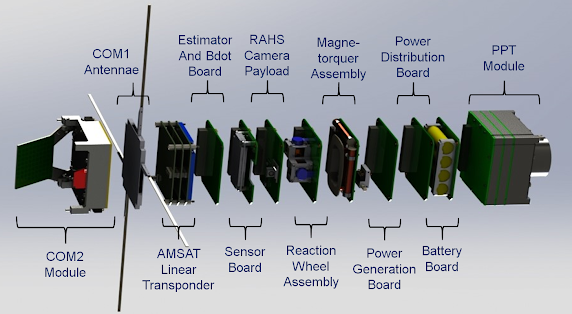
Artist’s impression of HuskySat-1 flying free in space but it’s still attached to Breeze K/M rocket body
After a week of testing, the transponder on HuskySat-1 is enabled and open for use and testing. It’s fairly sensitive, and 5-10 watts is plenty most of the time. There are some fades due to satellite orientation, and some passes are definitely better than others. The operations and engineering teams are also watching a few anomalies. Please keep an eye on the beacon during transponder ops, for those with spectrum scopes. Strong signals may impact the beacon strength.
HuskySat-1 is the Husky Satellite Lab at University of Washington’s first cubesat, and the first mission with AMSAT’s linear transponder module (LTM-1), a V/u transponder and integrated telemetry beacon and command receiver. UW recently completed their Part 5 operations and have graciously let AMSAT’s Part 97 transponder operations commence. This transponder module is available for use in educational cubesat missions willing to enable the transponder for worldwide use. Contact Drew KO4MA or VP Engineering Jerry Buxton N0JY for additional details.
Reports and observations are welcome to the Amsat-BB mailing list.
Congratulations to Husky Satellite Lab, and to the entire AMSAT Engineering team for keeping amateur radio in space. Thanks to Dr. Mark Hammond, N8MH for commissioning and operations support.
73, Drew KO4MA
AMSAT VP Operations
HuskySat-1 V/u inverting transponder, 145.910 to 145.940 uplink, 435.810 to 435.840 downlink, telemetry beacon 1200 baud BPSK at 435.800





You must be logged in to post a comment.